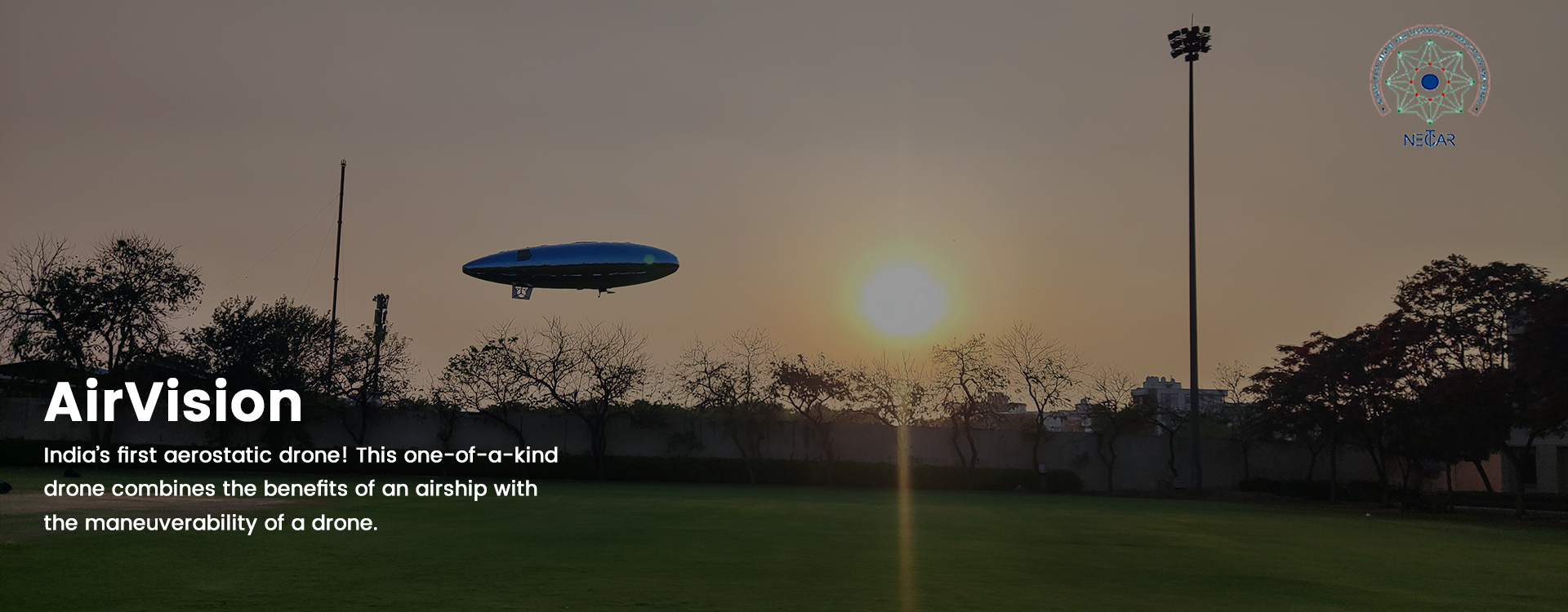The Role of AI in Enhancing Drone Monitoring Systems
 Airbotix
AirbotixTechnology is changing at lightning speed, and if you're still thinking of drones as just flying cameras, you're in for a surprise.
Today’s drone monitoring systems are no longer just about aerial footage—they’re smart, self-learning, and data-driven thanks to artificial intelligence (AI).

In this article, we’ll unpack how AI is supercharging drone monitoring and why it’s a game-changer across industries like agriculture, security, disaster response, and logistics.
So, What’s AI Got to Do with Drones?
Let’s simplify it.
AI turns drones from passive flyers into active problem-solvers.
Instead of just collecting video, AI helps drones analyze what they see in real time. Think object detection, movement tracking, pattern recognition, and even predictive alerts—all without waiting for a human to review the footage.
In short, AI makes drones faster, smarter, and incredibly efficient.
Smarter Surveillance with Less Human Input
Traditionally, drone operators had to steer the drone, watch the feed, and interpret the footage.
But with AI, drones can:
Detect unusual activity
Track people, vehicles, or animals
Analyze terrain or temperature patterns
Send alerts autonomously
This level of automation reduces the need for constant manual oversight, which saves time and lowers operational costs.
Real-Time Data, Real-Time Decisions
In critical operations—like firefighting, border security, or disaster response—every second matters.
AI-enabled drone monitoring systems can identify threats or damage in real-time. They can flag movement, measure structural changes, or even detect heat signatures through thermal imaging.
That means faster decisions, faster action, and often, lives saved.
The Power of Predictive Monitoring
AI doesn’t just react—it predicts.
For example, in agriculture, AI helps drones study crop health using multispectral imaging. Over time, they can predict pest infestations, soil dryness, or disease spread—before it becomes visible to the naked eye.
In construction or utility maintenance, AI-equipped drones can forecast wear and tear, helping prevent accidents.
That’s proactive monitoring at its best.
AI + Aerostat & Airships: Smarter, Higher, Longer
While drones are perfect for mobile, short-to-mid-range surveillance, aerostats and Airships are useful for extended coverage at high altitudes.
Now imagine combining them with AI.
An aerostat tethered over a disaster zone could monitor changes 24/7, using AI to highlight activity or damage in real-time. Meanwhile, Airships equipped with AI systems can monitor coastlines, forests, or large borders for days with little human intervention.
Together, these technologies offer unmatched surveillance power.
Enhanced Mapping and Analytics
AI also boosts aerial mapping accuracy. With machine learning, drones can:
Create 3D maps in real time
Identify unauthorized land use
Track construction progress
Analyze environmental changes
It’s especially useful in urban planning, mining, and environmental monitoring, where decisions rely on fresh, accurate geospatial data.
Safer and More Autonomous Flight Paths
Drones flying in busy airspace or near populated areas can be risky without proper control.
AI helps by enabling:
Obstacle avoidance
Geo-fencing
Dynamic re-routing
Emergency auto-landing
This means drones can fly longer, cover more ground, and return safely—even with changing weather or signal loss.
Use Cases Across Industries
Let’s look at some real-world applications of AI-enhanced drone monitoring:
Agriculture: Crop health analysis, irrigation planning, pest detection
Construction: Site inspection, material tracking, safety audits
Energy: Monitoring solar farms, oil pipelines, wind turbines
Public Safety: Crowd monitoring, traffic analysis, rescue missions
Environmental: Forest fire alerts, wildlife tracking, pollution mapping
These are just a few. As AI models evolve, use cases will only expand.
Does This Mean Fewer Jobs?
Not really.
AI doesn’t replace people—it amplifies them. It reduces repetitive tasks and helps teams focus on higher-level decision-making. Pilots, data analysts, and security teams all benefit from better tools and faster insights.
Think of it as working smarter, not harder.
Challenges to Keep in Mind
Of course, there are still some hurdles:
AI models require quality training data
Weather can affect drone performance
Data privacy and airspace regulations need attention
Integration with legacy systems can be tricky
But with the right team and tools, these challenges are manageable—and well worth overcoming.
Final Thoughts: The Sky Isn’t the Limit Anymore
AI is turning drones from flying cameras into intelligent agents that monitor, detect, predict, and respond.
When you pair them with platforms like aerostats or long-range Airships, the possibilities are endless—from farm fields to smart cities to national borders.
So, if you’re still relying on basic surveillance methods, now’s the time to upgrade. AI-powered drone monitoring isn’t just the future—it’s already here.
Looking for a Drone Show Company in India?
While AI is transforming drone tech for surveillance, let’s not forget the visual magic drones can create too.
Looking to host a wedding, launch a brand, or celebrate a national event? A synchronized drone light show can turn your sky into a storytelling canvas.
We’re proud to be one of India’s leading drone show providers—offering safe, scalable, and spectacular aerial displays that leave crowds speechless.
Want to see your brand in the sky? Get in touch and let’s make it happen.
Subscribe to my newsletter
Read articles from Airbotix directly inside your inbox. Subscribe to the newsletter, and don't miss out.
Written by

Airbotix
Airbotix
Airbotix Technology is a product-oriented organization that specializes in developing high-performance, reliable and autonomous unmanned systems for defence and civilian applications. Our core competencies include conceptual and detailed design, autonomous navigation algorithms, firmware development and AI for data analytics. Our commitment is to deliver solutions that improve safety, efficiency and productivity.